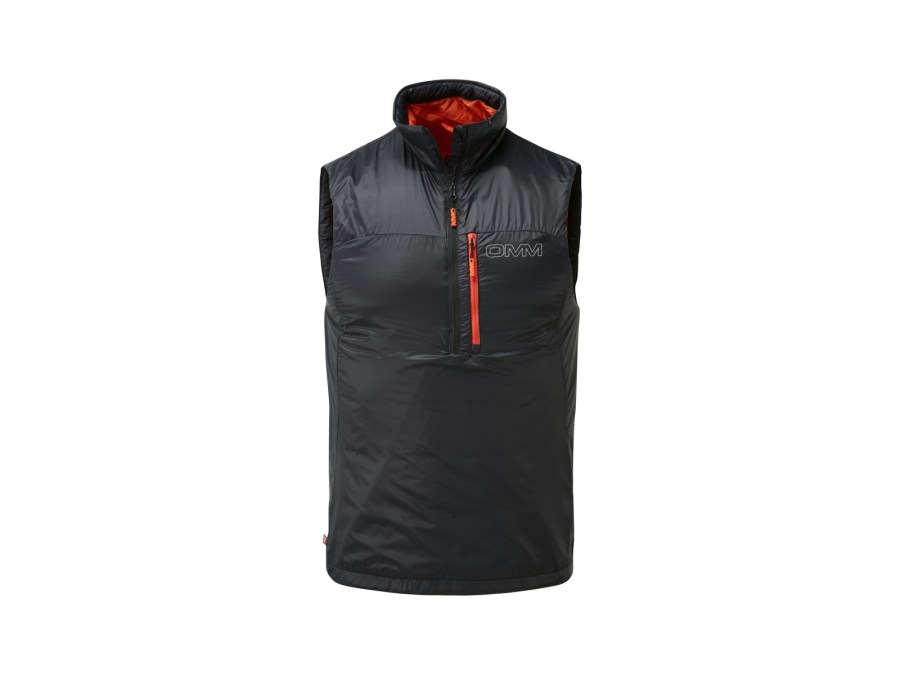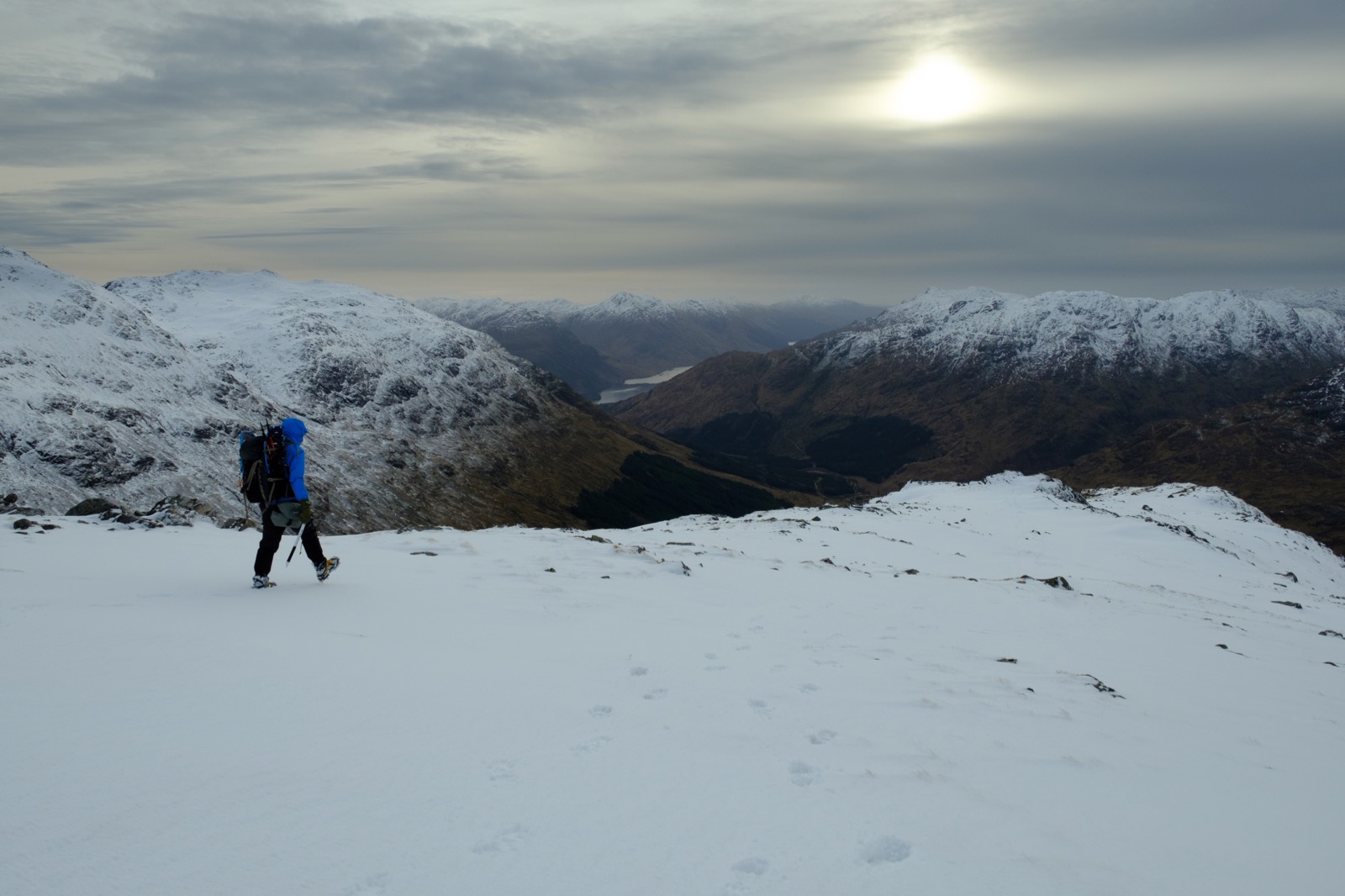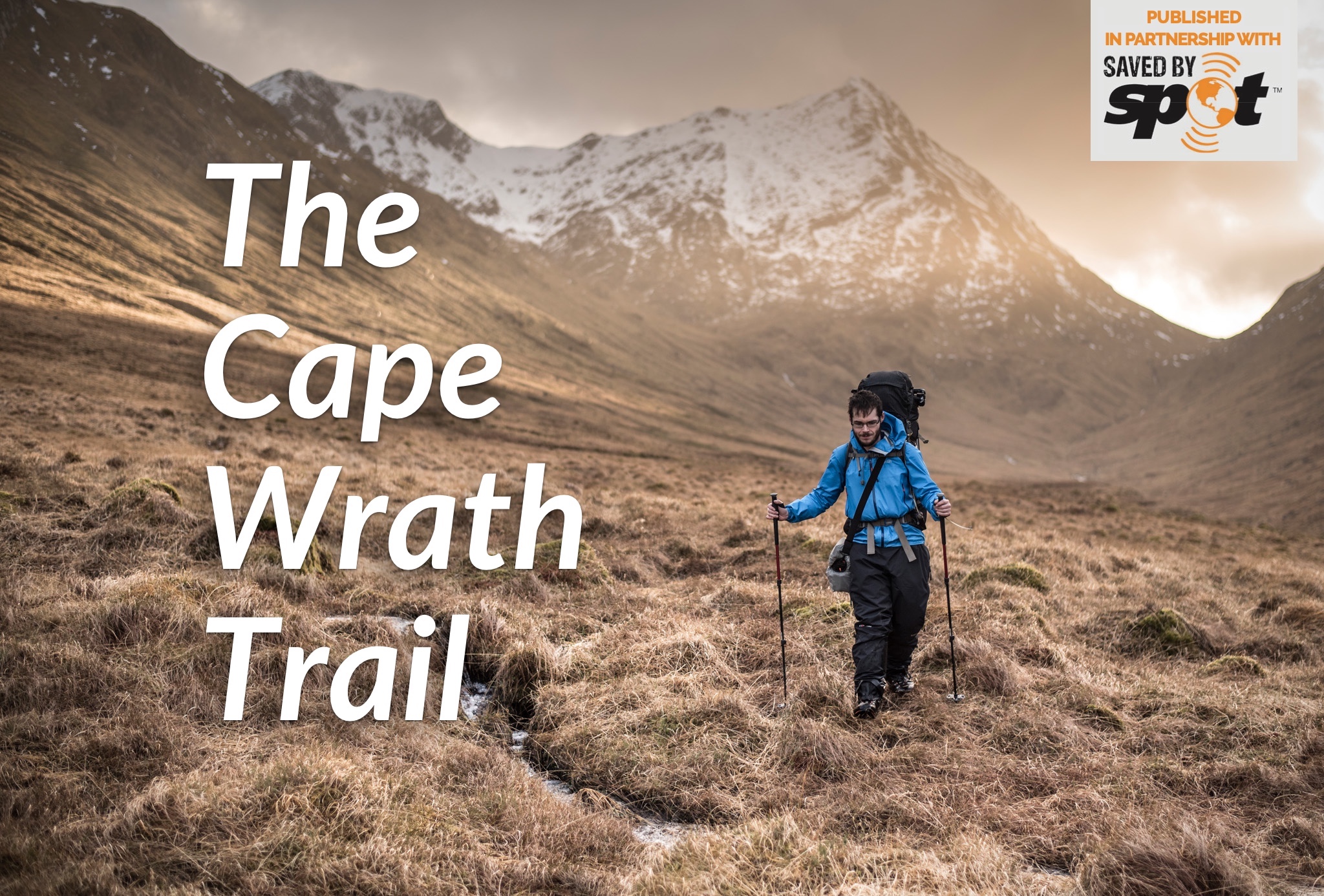Alex Roddie reviews an ultralight synthetic layering piece, ideal as an additional layer in colder conditions.
When selecting gear for my recent winter Cape Wrath Trail, I had a hard time figuring out my layering system. Scotland in February can be highly changeable, from extreme wintry storms to far more benign weather, and I had to cope with these variations without piling on too much pack weight. In addition to a down jacket and a fleece, I soon realised that I was looking for a lightweight synthetic garment I could layer beneath a shell jacket on colder days.
In 2018 I reviewed the Rotor Smock. The Rotor Vest takes the same basic design and removes the sleeves – but there are a few other design tweaks too, and as I discovered, the vest format makes this product more suitable as a layering piece. This time I opted for a slightly larger size to make it easier to fit over a fleece.
Don’t forget to read our review of the Rotor Smock here. Much of the same information applies.
First impressions
Just like the Rotor Smock, the Rotor Vest feels so light and compressible it hardly seems real at first. While it isn’t quite as fluffy as a down jacket, the PrimaLoft Gold insulation provides fantastic loft. It contains 40g of insulation and is one of the lightest insulated garments you can buy. On my scale, the Rotor Vest (L) weighs a mere 130g.
Just like in the smock version, the outer shell is windproof, breathable and water-resistant, with a very comfortable feel. There are a few differences to the smock version:
- It has a hanging loop at the collar, which the smock lacks.
- The collar itself is slightly less tall, and therefore provides a bit less protection for the neck.
- The main zip doesn’t extend as far down your chest. This makes it slightly harder to pull on over other layers.
- Instead of the large kangaroo pocket at the front, with a zip at each side, instead it has a much smaller mesh-backed pocket directly beneath the main zip. This is big enough for a phone or a couple of cereal bars but not much more.
- It’s slightly shorter at the seat, and doesn’t cover my bum quite as well.
Otherwise, it’s pretty much the same garment, just sans sleeves.

The chest pocket zip is directly beneath the main chest zip, but when you’re wearing it the zips are far enough apart to easily distinguish them by feel.
On the hill
The Rotor Vest was one of the most useful and appreciated items of gear I took on the CWT. In colder conditions near the start of the trail, I wore it often, either over a base layer or over a microfleece (this was my favoured configuration in biting windchill high on the Munros above Glenfinnan).
I often found myself popping it on during brief snack stops too when a down jacket would have been overkill. Of course, it isn’t totally windproof when worn as an outer layer, as it lacks sleeves.
As a mid layer, the lack of sleeves was a positive quality. While the smock version can be used as a mid layer too, it feels appreciably warmer; the vest, on the other hand, provides significantly more ventilation by design, and focuses on keeping in core warmth. For me, using it actively on the hill, it provides about as much insulation as the lightest microfleece garments, but with superior temperature regulation. That makes it useful in winter when you need something more than a single fleece under your waterproof jacket. And it was highly breathable in those scenarios too.
The shorter chest zip was not a problem when using the vest over a base layer or fleece, but I definitely noticed the difference when trying to put it on over my shell – this felt awkward. A garment with a full-length zip would be much better if you want to use it this way.
While the pocket situation isn’t as good as the fantastic kangaroo pocket offered by its sleeve-equipped sibling, the vest is less likely to be used as an outer layer and therefore I’d argue pockets are less important. I never used the pocket once during my trip.
Who is the Rotor Smock for?
This is an even more minimalist garment than the Rotor Smock and, arguably, a bit more niche. Few walkers will want to carry a sleeveless vest as their sole insulated garment, but it makes a great supplementary piece during the colder months when you’re already going to be carrying a much warmer down jacket and a fleece. It would also make a great backup layer at any time of year. Let’s face it, the additional 130g will be unnoticeable in your pack. At £100 it isn’t cheap to carry as a backup layer, but it does its job admirably.










